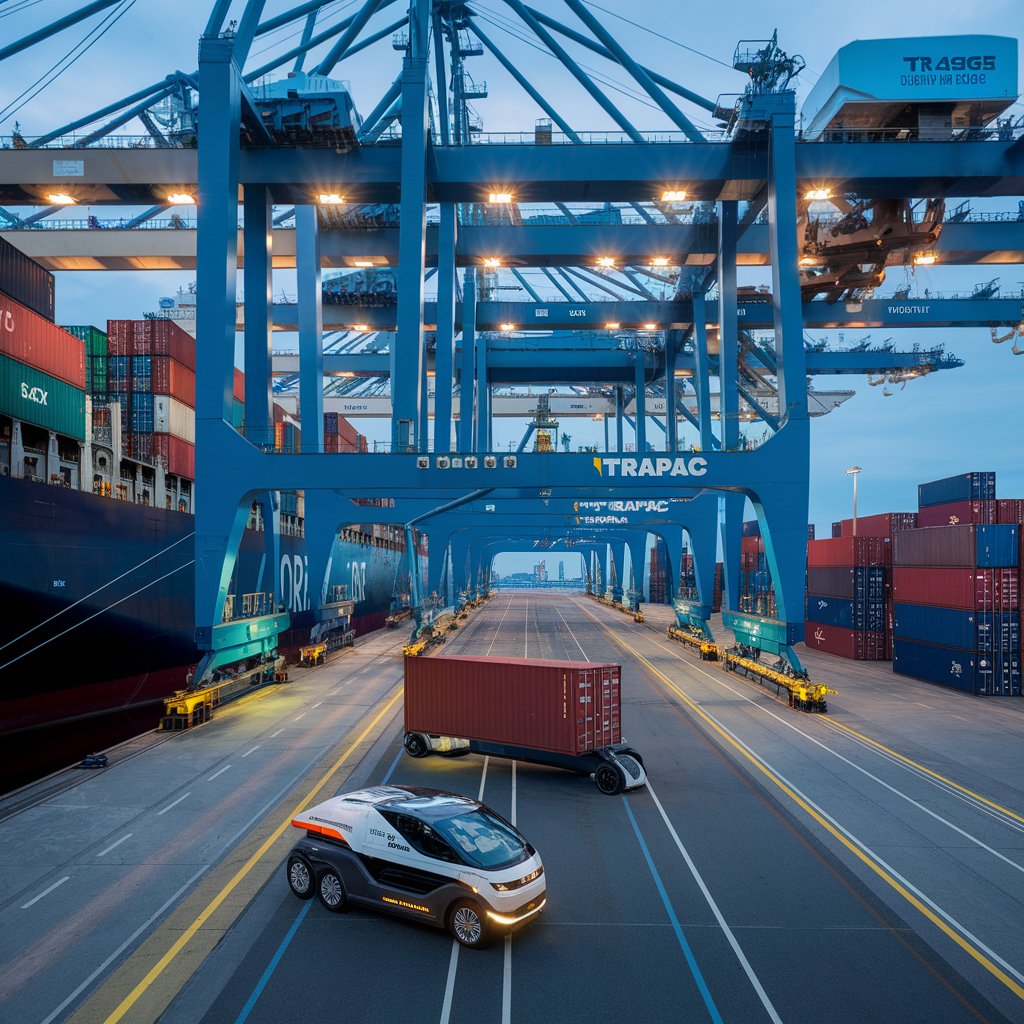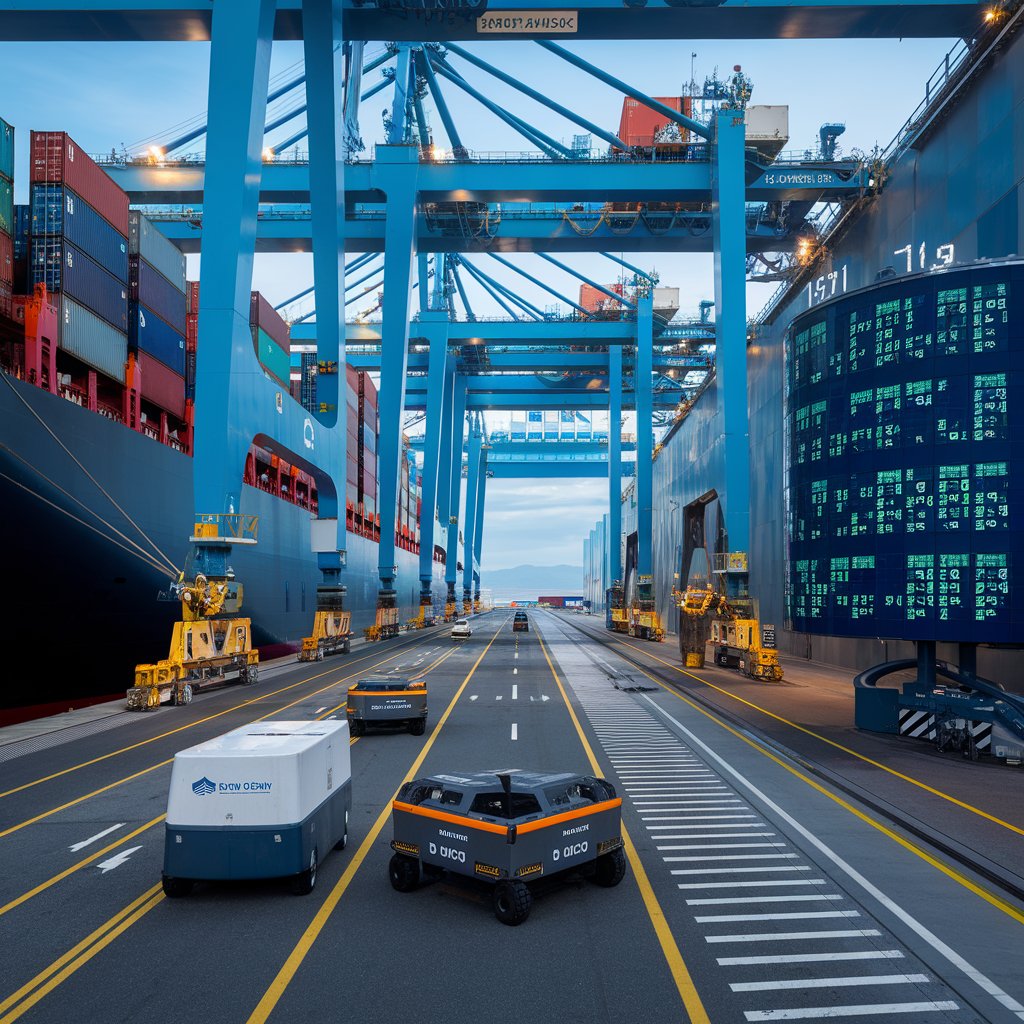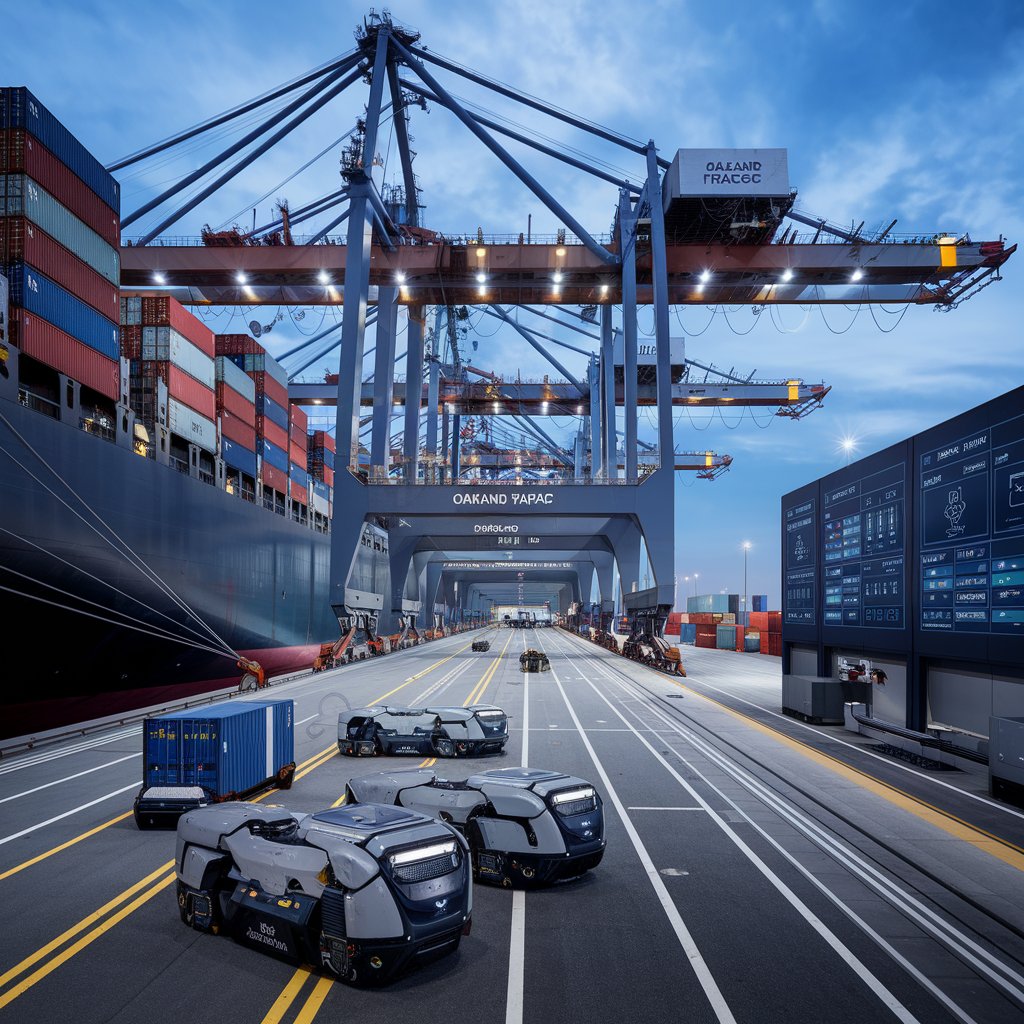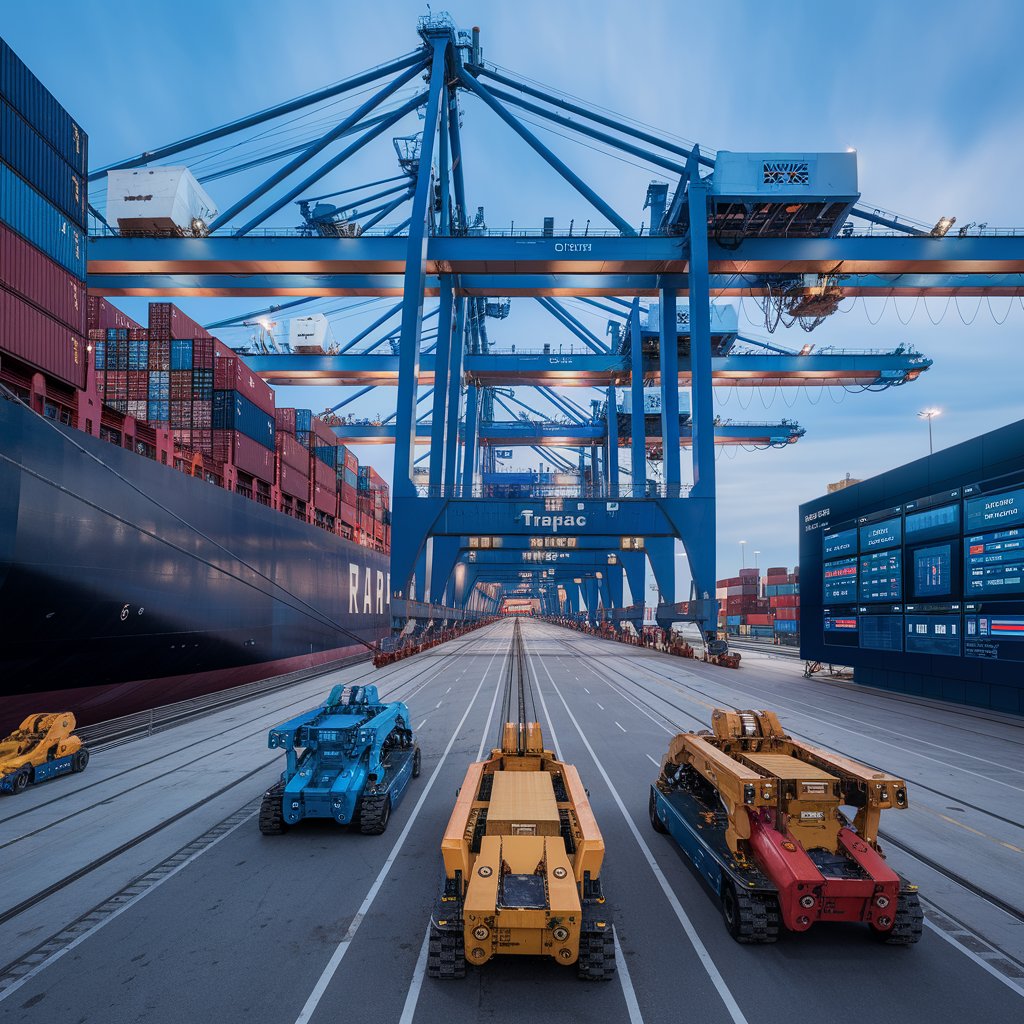Breaking Down Oakland TraPac
But what makes TraPac different from other terminals at the Port of Oakland? How does it benefit businesses, freight forwarders, and supply chain professionals?
In this guide, we’ll break down everything you need to know about Oakland TraPac, including its infrastructure, logistics advantages, and role in the global shipping industry. 🚢📦

What Is Oakland TraPac?
TraPac is a privately owned and operated container terminal at the Port of Oakland, specializing in automated cargo handling, intermodal transport, and efficient vessel operations. Originally established in Los Angeles, TraPac expanded to Oakland in 2016, becoming one of the most modern and high-tech terminals on the West Coast.
📌 Key Features of Oakland TraPac:
✔ Fully Automated Terminal Operations – Faster, more efficient container handling.
✔ Dedicated Intermodal Rail Access – Seamless connections to rail freight networks.
✔ Sustainable & Green Port Initiatives – Reduced emissions, electrified cargo handling.
✔ Advanced Tracking & Logistics Technology – Real-time shipment visibility.
✔ Key Trade Route Connectivity – Serves major Asia-U.S. trade lanes.
💡 Example: A company importing consumer electronics from China can use TraPac’s automated terminal to quickly unload and transfer containers to rail or trucking networks for faster distribution.
Why Is Oakland TraPac Important?
✅ 1. Automation & Cutting-Edge Terminal Technology
✔ Uses automated stacking cranes and remote-controlled cargo handling.
✔ Reduces wait times for truckers and improves vessel turnaround efficiency.
✔ Provides real-time cargo tracking for shippers and freight forwarders.
✅ 2. Strategic Location for Global Trade
✔ Serves key trans-Pacific shipping lanes, linking the U.S. with Asia and Latin America.
✔ Ideal alternative to Los Angeles and Long Beach ports, reducing congestion.
✔ Located near major rail and trucking networks, ensuring seamless distribution.
✅ 3. Strong Intermodal & Inland Connectivity
✔ Direct access to Union Pacific & BNSF rail lines, expediting cargo movement.
✔ Truck-friendly terminal layout for faster gate-in/gate-out times.
✔ Close to Oakland International Airport, enabling multimodal logistics.
✅ 4. Commitment to Sustainability & Green Logistics
✔ One of the cleanest terminals in California, investing in zero-emission equipment.
✔ Reduces carbon footprint with shore power connections for vessels.
✔ Supports electrified cargo handling operations to improve air quality.

Advantages & Disadvantages of Using Oakland TraPac
📈 Advantages for Businesses
✔ Faster Cargo Handling – Automated cranes and efficient truck processing reduce delays.
✔ Lower Congestion – Less crowded than Southern California ports.
✔ Green Supply Chain Solutions – Environmentally friendly logistics options.
✔ Lower Operating Costs – Avoids costly detention and demurrage fees at busier ports.
📉 Potential Challenges
❌ Technology Learning Curve – Some carriers and truckers need time to adjust to automated systems.
❌ Limited Space for Expansion – Growth is restricted by surrounding urban areas.
❌ Weather-Related Disruptions – Occasional fog and storms can delay vessel operations.
Oakland TraPac vs. Other Major West Coast Terminals
Feature | Oakland TraPac | Los Angeles TraPac | Long Beach Terminal | Seattle-Tacoma Terminal |
Automation Level | High | Moderate | Moderate | Low |
Primary Trade Routes | Asia, Latin America | Asia, Pacific Trade | Asia, Pacific Trade | Asia, Alaska, Canada |
Annual TEU Capacity | High | Largest in the U.S. | Second-largest in the U.S. | Moderate |
Intermodal Access | Rail, road, air | Rail, road | Rail, road | Rail, road, air |
Green Initiatives | Strong | Moderate | High | Moderate |
Best For | Speed, automation, sustainability | High-volume Asia imports | High-volume Asia imports | Canada, Alaska, West Coast trade |
💡 Key Takeaways:
✔ TraPac Oakland is one of the most automated terminals on the West Coast.
✔ It provides a strong alternative to congested ports like Los Angeles and Long Beach.
✔ Seattle-Tacoma focuses more on trade with Canada and Alaska.

How to Use Oakland TraPac for Shipping & Logistics
For Importers & Exporters:
✔ Plan shipments based on vessel schedules and automation processes.
✔ Take advantage of real-time cargo tracking tools for better logistics planning.
✔ Use TraPac’s sustainable supply chain solutions for eco-friendly shipping.
For Freight Forwarders & Logistics Providers:
✔ Optimize shipping routes through TraPac for faster inland distribution.
✔ Coordinate with rail and trucking partners to move cargo efficiently.
✔ Utilize TraPac’s automated gate systems for quick truck turnarounds.
When to Choose Oakland TraPac?
✅ Best Situations for Using Oakland TraPac:
✔ When shipping to/from Asia, Latin America, and North America.
✔ When looking for automated cargo handling and faster processing times.
✔ When seeking sustainable logistics solutions with reduced emissions.
🚫 When It May Not Be the Best Choice:
❌ If shipping bulk cargo that requires specialized handling, other ports may be better.
❌ If a business needs larger container volume capacity, Los Angeles or Long Beach may be preferable.

The Future of Oakland TraPac
As global shipping evolves, Oakland TraPac is investing in infrastructure, automation, and sustainability to stay ahead. Key future developments include:
🚀 Further automation of terminal operations – Enhancing efficiency and reducing human error.
🚀 Expansion of zero-emission logistics solutions – Investing in electric-powered cargo handling.
🚀 Stronger intermodal rail partnerships – Improving inland cargo movement and delivery times.
Businesses that leverage Oakland TraPac’s advantages will benefit from faster, more cost-effective, and environmentally friendly logistics solutions.
Conclusion
Oakland TraPac is a highly advanced, automated terminal at the Port of Oakland, providing efficient cargo handling, intermodal connectivity, and sustainable logistics solutions.
✔ Best for: Businesses shipping to/from Asia and Latin America, looking for fast and automated cargo handling.
✔ Challenges: Technology adaptation, weather risks, and space constraints require careful planning.
By understanding how Oakland TraPac operates, businesses can optimize supply chain efficiency, reduce costs, and improve global trade operations. 🚢📦💼
